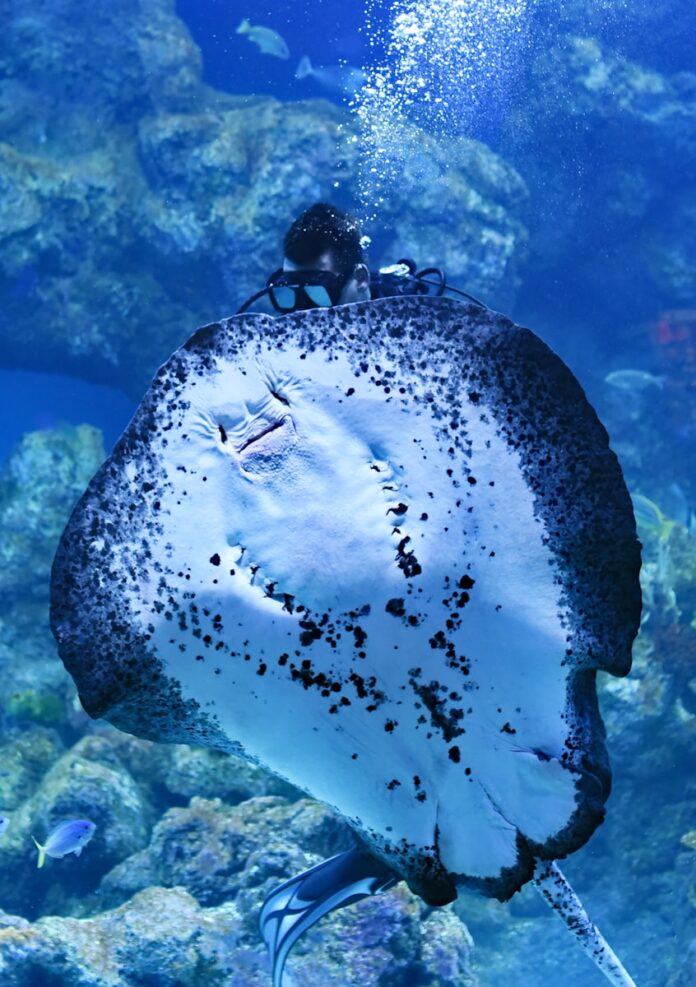Introduction to the Manta Ray Night Snorkel Experience
The Kona Coast of Hawaii’s Big Island is renowned for its pristine waters, diverse marine life, and one of the most unique ocean experiences in the world: the Manta Ray Night Snorkel. This extraordinary adventure takes you into the ocean at night to witness the graceful movements of manta rays, one of the ocean’s most majestic creatures. Unlike any other snorkeling experience, the Manta Ray Night Snorkel offers a rare opportunity to observe these gentle giants up close as they glide through the water beneath the cover of darkness. This activity is a must for ocean enthusiasts and anyone looking for an unforgettable experience on the Big Island.
Overview of the Manta Ray Night Snorkel
The Manta Ray Night Snorkel takes place just off the coast of Kona, a location known for its high population of manta rays. These large, harmless creatures, with wingspans that can reach up to 18 feet, gather here regularly to feed on plankton attracted by the lights from boats and divers. The tour typically lasts for two to three hours and provides participants with all the necessary equipment, including wetsuits, snorkels, masks, and flotation devices.
- Duration: Approximately 2.5 to 3 hours, including boat travel time and snorkeling.
- Location: Kona Coast, Big Island of Hawaii.
- Difficulty Level: Beginner-friendly; suitable for most skill levels, including first-time snorkelers.
- Equipment: Snorkeling gear, wetsuits, and flotation devices are provided by the tour operator.
The Experience: What to Expect on the Manta Ray Night Snorkel
Getting Started: Departure from the Kona Coast
Your adventure begins with a boat ride from the Kona Coast to one of the best manta ray viewing spots, such as Manta Village or Manta Heaven. These sites are renowned for their consistent manta ray sightings and are located just offshore, making for a short and enjoyable boat ride. As the sun sets, the boat will anchor in a calm bay, and the guides will prepare you for the snorkeling experience.
- Safety Briefing: Before entering the water, the guides provide a thorough safety briefing, explaining the best practices for interacting with manta rays and how to use the snorkeling equipment. The manta rays are completely harmless to humans, but it’s important to follow the guidelines to ensure a safe and respectful encounter.
- Wetsuit and Gear Fitting: You’ll be provided with a wetsuit to keep you warm in the cool evening waters, as well as a mask, snorkel, and fins. The guides will assist with fitting the gear to ensure your comfort.
Entering the Water: Night Snorkeling Setup
Once everyone is geared up, it’s time to enter the water. The boat is equipped with large floating rafts or light boards that are specially designed for manta ray snorkeling. These boards have built-in lights that shine downward into the water, attracting plankton. The manta rays, in turn, are drawn to the area to feed on the plankton, creating the perfect opportunity for snorkelers to observe them.
- Floating Rafts: Participants hold onto the edges of the floating rafts or boards, which keep you comfortably afloat while you observe the manta rays below. The lights on the rafts attract the plankton, which in turn draws the manta rays, ensuring a close encounter without the need to dive deep.
- The Night Snorkel Environment: Snorkeling at night adds an extra layer of excitement to the experience. The dark ocean contrasts with the illuminated water below, creating an ethereal atmosphere as the manta rays glide gracefully through the beams of light. The visibility provided by the lights allows for clear viewing of the manta rays as they swim just inches from the surface.
Up Close with Manta Rays: A Mesmerizing Encounter
The highlight of the Manta Ray Night Snorkel is, of course, the up-close encounter with the manta rays. These gentle giants are known for their elegant, acrobatic movements as they somersault and loop through the water, feeding on plankton. Watching them perform their graceful underwater ballet is truly mesmerizing.
- Manta Ray Behavior: Manta rays are filter feeders, meaning they swim with their large mouths open to collect plankton. You’ll observe them gliding effortlessly through the water, making slow, deliberate movements as they circle beneath the lights. Despite their size, manta rays are incredibly graceful, and their peaceful demeanor creates a sense of awe and wonder.
- Proximity to Manta Rays: The manta rays often come very close to snorkelers, sometimes within arm’s reach. While it’s important not to touch them, the proximity allows for an intimate viewing experience that few other marine encounters can match.
- Photography Opportunities: Many tour operators provide underwater photography services, allowing you to capture your experience with the manta rays. Be sure to inquire about this option if you’d like a professional to document your adventure. Alternatively, if you have an underwater camera, this is the perfect opportunity to use it.
Wrapping Up: Returning to the Kona Coast
After spending approximately 30 to 45 minutes in the water with the manta rays, it’s time to return to the boat. As you dry off and warm up, the boat crew will provide light refreshments, such as hot chocolate or tea, to help you relax after your adventure. The boat then returns to the Kona Coast, where your unforgettable night in the ocean comes to an end.
Why the Manta Ray Night Snorkel is a Must-Do on the Big Island
The Manta Ray Night Snorkel is one of the most unique and memorable experiences you can have on the Big Island. Here are a few reasons why this activity should be at the top of your itinerary:
- Exclusive Experience: Kona is one of the few places in the world where you can experience manta rays up close in their natural habitat, especially at night. This rare opportunity makes the Manta Ray Night Snorkel a bucket-list item for many travelers.
- Safe and Accessible: The tour is designed to be accessible to snorkelers of all skill levels, including beginners. The use of floating rafts ensures that even those who are not strong swimmers can comfortably participate in the experience.
- Environmental Responsibility: Manta rays are a protected species, and the tour operators in Kona are committed to responsible and sustainable practices. By following guidelines and educating participants about manta rays, the tours help promote conservation efforts while providing an incredible experience.
Preparing for Your Manta Ray Night Snorkel
What to Bring
- Swimsuit: Wear your swimsuit under your clothes for convenience when changing into the wetsuit.
- Towel: Bring a towel to dry off after snorkeling.
- Warm Clothes: After the tour, you may want a warm layer to wear during the boat ride back to shore.
- Waterproof Camera: If you have a waterproof camera, this is the perfect time to bring it for capturing photos and videos of the manta rays.
Additional Tips
- Motion Sickness: If you’re prone to seasickness, consider taking motion sickness medication before the tour. The boat ride can be a bit bumpy, especially at night.
- Listen to the Guides: The tour guides are experts in manta ray behavior and safety. Pay attention to their instructions for a safe and enjoyable experience.
Conclusion
The Manta Ray Night Snorkel at Kona offers an awe-inspiring opportunity to witness one of nature’s most graceful creatures up close in their natural habitat. This experience combines adventure, education, and the thrill of being in the open ocean at night, making it one of the most unforgettable activities on the Big Island. Whether you’re a seasoned snorkeler or a first-timer, this tour is sure to leave you with lasting memories of your time in Hawaii.
To book your Manta Ray Night Snorkel and witness these majestic creatures in the waters of Kona, visit Viator. For more travel content and tips, check out Izase, your go-to source for lifestyle and travel inspiration. Please note that while we strive to provide accurate information, there may be modifications or changes, so it’s always a good idea to check the booking page on Viator for the most up-to-date details.
MORE FROM IZASE


